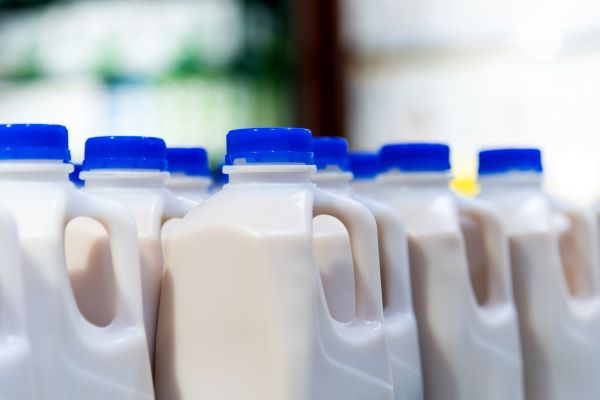February 4, 2025
Key Factors to Watch in the Dairy Market for 2025

Farm Credit East recently hosted a webinar with Christopher Wolf, of Cornell University, to provide a 2025 Dairy Industry Outlook. Trade issues and policy changes may lead to shocks affecting milk prices and feed costs. Below is a summary of 2024 milk production followed by important factors that will influence the industry in 2025.
Market Overview
2024 started with low milk prices and tight margins due to high feed prices. There was significant improvement in the second half of the year, but it is important to note the impact of inflation on milk prices. A $25 milk price in 2024 is not equivalent to the same price before the inflation of 2022.
U.S. milk production has been flat for the past three years, with 2024 continuing this trend. The total milk production has been around 226 billion pounds annually. Butterfat and protein components continue to help determine the profitability of dairy farms.
The number of milk cows in December 2024 was 20,000 more than in December 2023. However, there have been tight heifer numbers for the last two years, with a lower heifer-to-milk cow ratio than historically observed. This is partly due to genetic testing and selective breeding practices, including breeding the remaining cows with beef cattle, which has become a profitable practice and has impacted culling rates.
3 Key Factors to Watch in 2025
Trade Issues
Changes in trade policies, tariffs and international agreements can impact the export and import of dairy products. Over half of U.S. dairy exports go to Canada, Mexico and China, meaning tariffs and a potential trade war would negatively impact the U.S. dairy industry’s competitiveness. These changes can affect the supply and demand dynamics, influencing milk prices and the profitability of dairy farms.
Domestic Economy
Economic conditions such as inflation, interest rates and consumer spending can affect the demand for dairy products. For instance, higher inflation can lead to increased production costs, while changes in consumer spending can influence the demand for dairy products. Consumer spending on food is a little weaker due to higher prices, but so far it has been resilient, keeping the domestic economy strong.
Potential Shocks
Potential shocks refer to unexpected events that can disrupt the dairy market. These can include labor disruptions from immigration enforcement and policy changes, along with implications from Highly Pathogenic Avian Influenza. Weather and how it can impact feed production is always something to watch. Such shocks can affect milk production, feed costs and overall market stability. It's essential to be prepared for these potential disruptions and have contingency plans in place.
To dive deeper into the above topics, review the webinar recording along with the presenter’s PowerPoint slides, or read the 2025 Dairy Industry Outlook.




